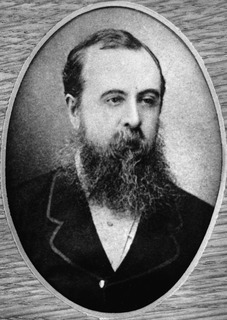The Local Government Board (LGB) was a British Government supervisory body overseeing local administration in England and Wales from 1871 to 1919.

The Melbourne rail network is a passenger and freight train system in the city of Melbourne, Australia. It is the core of the larger Victorian railway network, with links to both intrastate and interstate systems. A large suburban passenger network centred on the CBD also operates, with a limited degree of segregation from longer-distance passenger and freight trains.

The Victorian Railways (VR), trading from 1974 as VicRail, was the state-owned operator of most rail transport in the Australian state of Victoria from 1859 to 1983. The first railways in Victoria were private companies, but when these companies failed or defaulted, the Victorian Railways was established to take over their operations. Most of the lines operated by the Victorian Railways were of 5 ft 3 in. However, the railways also operated up to five 2 ft 6 in narrow gauge lines between 1898 and 1962, and a 4 ft 8 1⁄2 instandard gauge line between Albury and Melbourne from 1961.

John Alexander MacPherson, Australian colonial politician, was the 7th Premier of Victoria.

Duncan Gillies, was an Australian colonial politician who served as the 14th Premier of Victoria.

The State Electricity Commission of Victoria is a government-owned electricity supplier in Victoria, Australia. It was set up in 1918, and by 1972 it was the sole agency in the state for electricity generation, transmission, distribution and supply. Control of the SECV was by a Board of Commissioners appointed by the Victorian Government. After 1993, the SECV was disaggregated into generation, transmission and distribution companies, which were further split and then privatised in the mid to late 1990s. However, electricity supply agreements with the Portland and Point Henry aluminium smelters were retained by SECV, which continued as their electricity supplier.

James Macpherson Grant was an Australian solicitor who defended the Eureka Stockade rebels and a politician who was a member of the Victorian Legislative Assembly and the Victorian Legislative Council.
Clement Wilks was a notable civil engineer and architect in colonial Victoria, Australia.

George Christian Darbyshire was an English and Australian civil engineer. He was the second son of George Darbyshire, also a surveyor and railway engineer.

Lieutenant-General Sir Richard Hieram Sankey was an officer in the Royal (Madras) Engineers in the East India Company's army in British India, later transferring to the British Army after the Indian Rebellion of 1857 and the assumption of Crown rule in India. Sankey Tank which he constructed to meet the water demands of Bangalore is named after him. The high court building in Bangalore, Attara Kacheri, was designed by him and built by Arcot Narrainswamy Mudaliar.
Charles Edwin Jones was an Australian politician, member of the Victorian Legislative Assembly 1864 to 1871 and 1886 to 1889.
Hon. John Henry Brooke MLA, was a colonial Victorian politician.

Francis Longmore was a politician in colonial Victoria (Australia), commissioner of railways and roads 1869 to 1870 and for Crown Lands 1875 and 1877 to 1880.

Arthur Orpen Herbert was a public servant in Queensland, Australia. He was the second commissioner of Queensland Rail.
John Robinson Bailey was an Australian politician from 1 October 1859 to 1 July 1861 and Postmaster-General under the Nicholson administration from October 1859 to October 1860. Bailey was born in Leicester, England. He arrived in Australia in June, 1852 and set up a hosiery and outfitting warehouse in Eureka House, Malop Street, Geelong. He stated he had thirteen years experience in London and New York. He later traded as Bailey & Honey. He purchased crown land in Germantown, Victoria Australia. He farmed this land for four or five years while at the same time took part in editorial work of the Geelong Observer. In 1858 he moved to Ballarat where he edited the Ballarat Star, which he retained until he went into parliament. He became MLA after winning the seat of Ballarat West on 1 October 1859 and finishing on 1 Jul 1861. His appointments were Postmaster-General 27 October 1859 to 29 October 1860, Vice-president Board Land & Works and commissioner Public Works from 3 September 1860 to 2 October 1860, and Commissioner Trade & Customs from 19 October 1860 to 26 November 1860.
The Department of Economic Development, Jobs, Transport and Resources (DEDJTR) is a former department of the Government of Victoria. It was created on 1 January 2015 by the government of Premier Daniel Andrews when the number of government departments was reduced from 9 to 7, and assumed responsibility for ministerial portfolios previously spread across 5 departments. It was abolished at the end of 2018 and divided into two new departments.
The Ministry of Transport, later known as the Department of Transport, was a statutory ministry that acted as the chief transport agency of the Government of Victoria between 1958 and 1996. Originally established by the Transport Act 1951 and strengthened by the Transport Act 1983, the Ministry took on a variety of roles, coordinating the state's other transport operations and reporting to a number of Ministers throughout its history.













